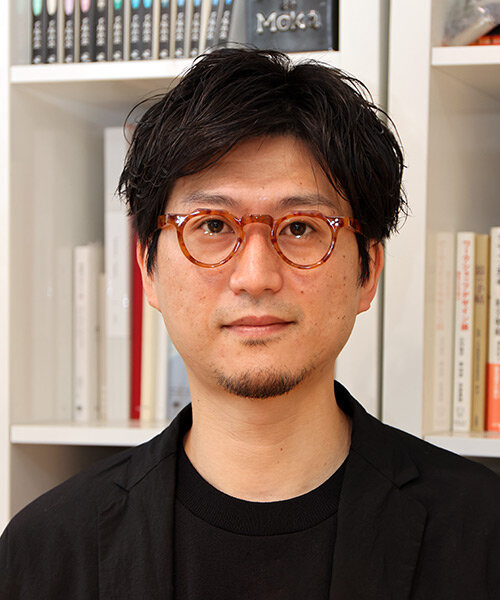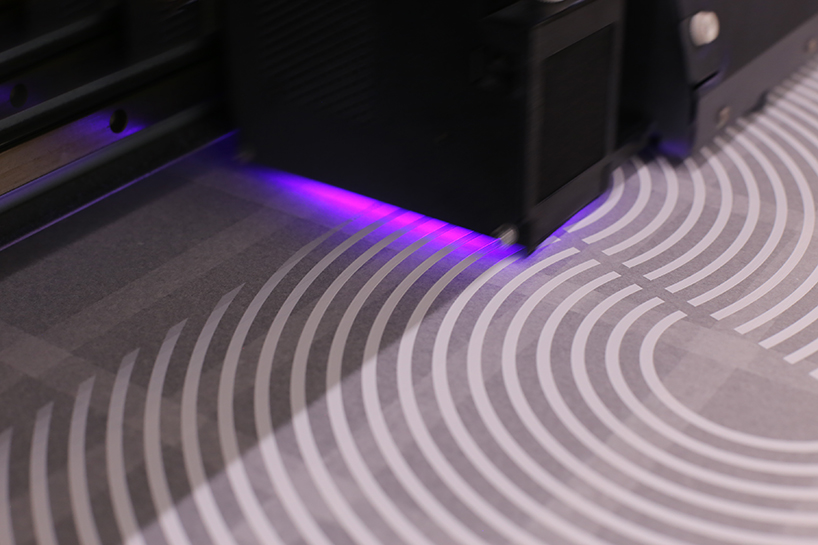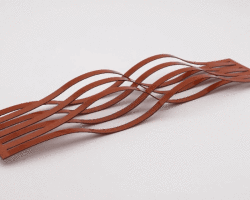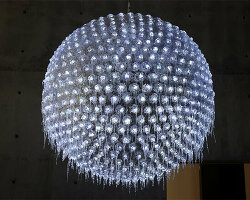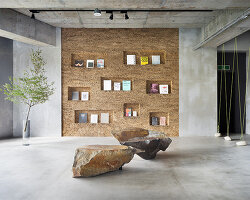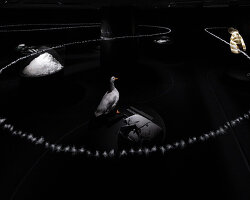described as a ‘design think and do tank’, takt project was founded in 2013 and is led by its principal, satoshi yoshiizumi. with a deep interest in connecting sensibilities with theories, yoshiizumi pursues and practices design as a ‘new intellect,’ which he says formulates a hypothesis that cannot be reached by logical thinking alone. the firm’s design theory is born from its self-driven research projects, which are developed alongside collaborations with a range of clients — from emerging startups to global brands.
designboom is in tokyo and spoke with satoshi yoshiizumi to learn more about the work of takt project and the firm’s unique approach to design. read the interview in full below, and see our studio visit feature where we take an exclusive look inside the workplace of takt project.
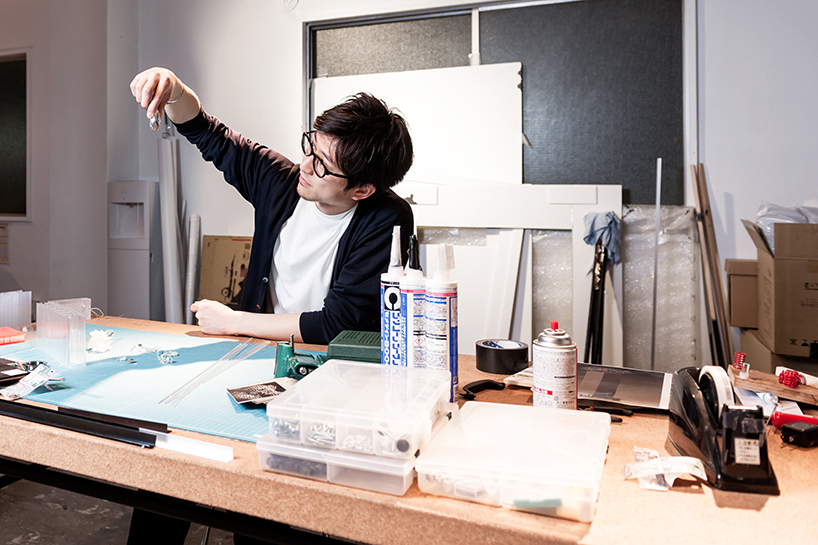
in 2017 satoshi yoshiizumi collaborated with swarovski | read more on designboom here
designboom (DB): what originally made you want to become a designer?
satoshi yoshiizumi (SY): since I was young, I have been fascinated by the charm of human-made products such as industrial products and architecture. where does that fascination come from? addressing that question is the main driving force that makes me want to design, and the beginning of design for me. it’s not an easy problem to resolve, and someone’s explanation isn’t the only answer. I have come to feel the great potential and charm of design that embraces such diverse ideas. by the time I started thinking about designing as my job, I was already captivated by design itself.
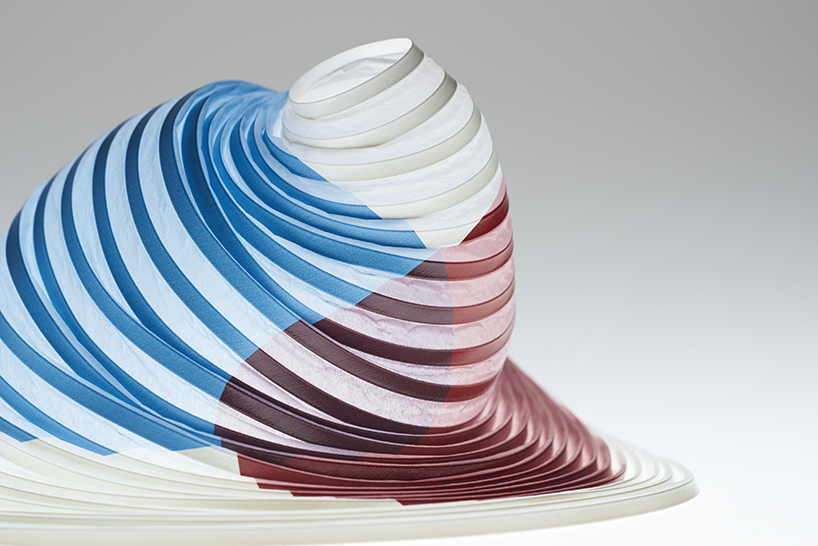
‘pecopaco‘ | read more on designboom here
image by masayuki hayashi (also main image)
DB: what aspects of your background and upbringing have shaped your design principles and philosophies?
SY: I think there are two. the first is that I was studying engineering before I started designing. I think that there are many designers who have studied mainly in art, but I was a student who was good at mathematics and physics, and went on to the mechanical engineering department at university. I thought that creating something attractive could also be approached from an engineering perspective. engineering has the wonder of writing theory and creating ‘solutions’ that everyone can understand, but I began to wonder if it could create something that moves people emotionally. by thinking logically and going back and forth between these two things on a daily basis, I am aware that I can see a different perspective.
the ‘pecopaco‘ project involved UV printing on delicate papers
SY (continued): the second aspect is that I was born and raised in the countryside, not in a big city like tokyo. big cities are filled with human-made things, but instead the countryside is filled with beautiful nature. fascinating man-made objects may be everyday landscapes for people in big cities, but it was very special for a person like me who came from the countryside. that is why I was fascinated by its mystery and splendor. even now, living in tokyo, I feel that I am unconsciously thinking about things while connecting with the splendor of nature.

‘FES watch’ | read more on designboom here
DB: you divide your work into two themes: ‘self-driven research projects’ and ‘collaborative projects’. can you explain how you work on these simultaneously, and the overlaps between them?
SY: generally, I think that a design studio is a so-called ‘order-receiving’ industry that operates by responding to the client’s request and receiving the compensation. our studio carries out this client work, but I think that many of the requested projects generally have a relatively short period and are practical. however, research on new design ideas and expressions is absolutely necessary. I think that it is important to do basic research on such a design with a long time axis as a studio, and I have been practicing this from the beginning.
the two are not independent, and by experiencing a practical case such as client work, I often get inspiration as a design theme that I want to think from a long-term perspective in the future. on the other hand, I think that because we are conducting research projects, even projects that are practical and have a short time period will always lead to the creation of unique perspectives and designs. for us, practice and research are like the two wheels of a bicycle.

‘glow ⇄ grow’ | read more on designboom here
image courtesy of takt project
DB: with work strongly driven by material research and experimentation, can you think of a breakthrough moment when you discovered a new possibility for a particular material?
SY: yes, for example the ‘glow ⇄ grow’ project announced in milan in 2019 was a breakthrough in discovering a new possibility of a resin material. however, I think it is also important that we do experiments with materials without any purpose. without having a specific purpose or tactic, you can discover various materials, play with them, and explore different possibilities. I think that we should try each of our thoughts and feelings as much as we can, and that big breakthroughs will occur at the point where the two intersect.

‘glow ⇄ grow’ | image courtesy of takt project
DB: you’ve said that your studio’s vision is to ‘work on projects that connect or re-shape society’. in what ways do you think design can improve society given the pandemic and current circumstances?
SY: I think that design can contribute as a concrete solution to a pandemic, and I think that is very important. on the other hand, I think that the ‘division’ of people brought about or highlighted by this pandemic is a very serious problem. for me, design is an attitude that questions existing myths and biased values, accepts diverse ideas and thinks that diverse ideas are wonderful. in other words, I think that design can be used to approach the problem of division.
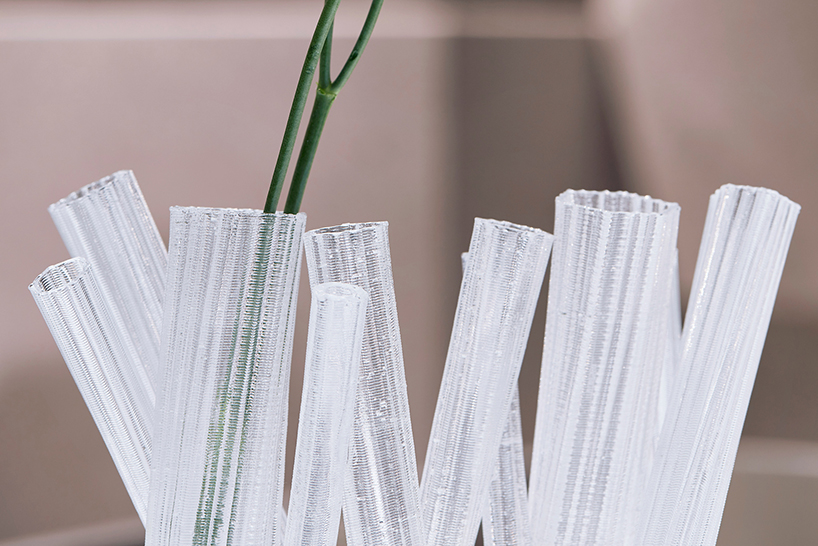
‘ice crystal’ | read more on designboom here
image by mark cocksedge
DB: your work mixes elements from the natural world with digital technologies. what interests you about this combination of contrasting matter?
SY: when humans make something, how does it connect with other things such as nature? in the ‘anthropocene’ era we need to take that into account. I think it is natural and important to think that everything is always connected indirectly and also directly. I think that the idea of completely controlling nature in order to ensure human safety is wrong.
digital technology may also feel like it has nothing to do with nature. however, not only do humans who use digital technology live on earth, but nature also exists in exactly the same way. it can be considered that the two are not unrelated in the first place. from this idea, I decided to create work using digital technology where everything is not controlled while interacting with nature.
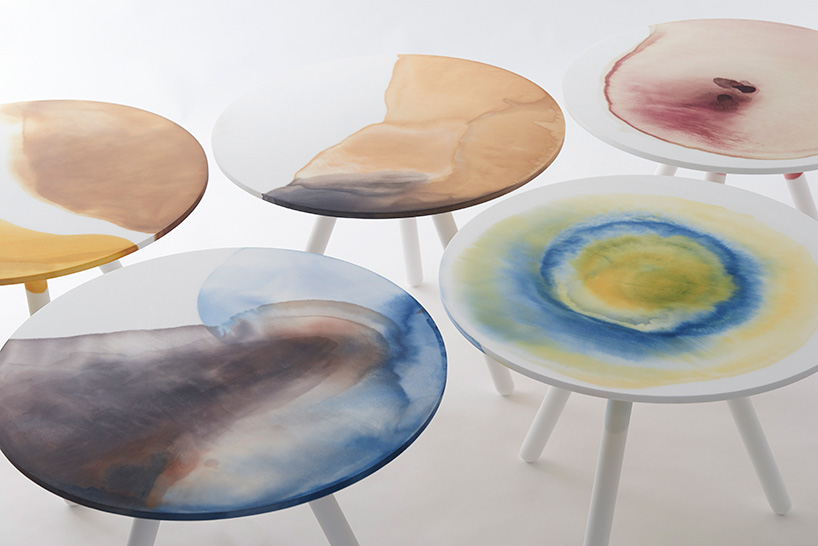
‘dye it yourself’ | read more on designboom here
image by masayuki hayashi
DB: japanese design is famous and very popular across the world. why do you think this is?
SY: because I am japanese, I will answer on the premise that it has not occurred to me yet whether japanese design is popular in the world. at the beginning of the japanese epic ‘the tale of the heike’, there is a passage that says, ‘the voice of the bell of jetavana has an unchanging sound’. I think that this feeling that ‘nothing is eternal’ is a very japanese way of thinking. of course, this kind of world view is a prerequisite for looking at nature, and I think it is also a prerequisite for the artificial objects that are created. I think that there is a very delicate relationship between the beauty of a moment, the respect for change, and the existence of yourself in it. in other words, it is a world view that thinks that change is universal. I think that one of our works, ‘dye it yourself’, is based on that idea.
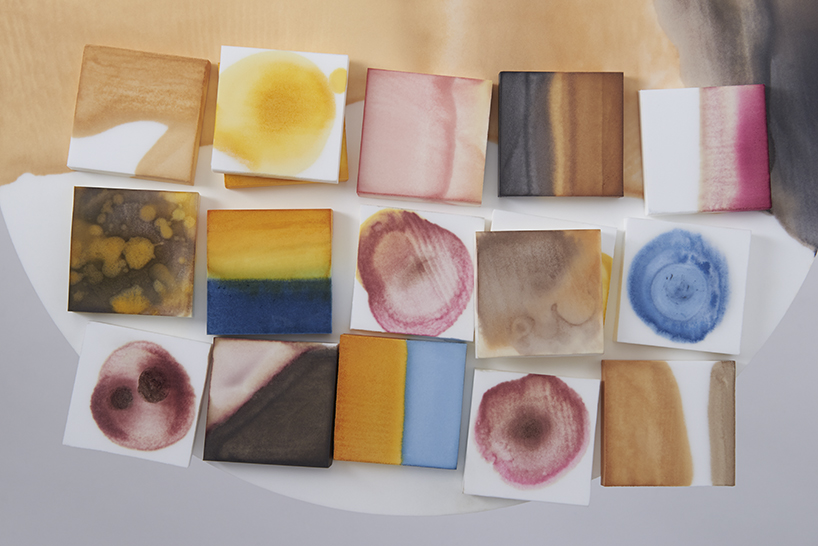
‘dye it yourself’ | image by masayuki hayashi
DB: outside of design, what are you currently fascinated by, and how is it influencing your creative work?
SY: parenting. I am fascinated by the process by which a child grows up, rather than from a parental perspective of ‘raising’. the other day, a 4-year-old child asked me the question: ‘why does time continue?’. it’s totally philosophical and how can I answer it? obviously, the appearance of dealing with all things with a clean slate makes me realize how much I think I have existing values and understanding. even though I have a lot of knowledge, I would like to continue to have fresh questions like children.
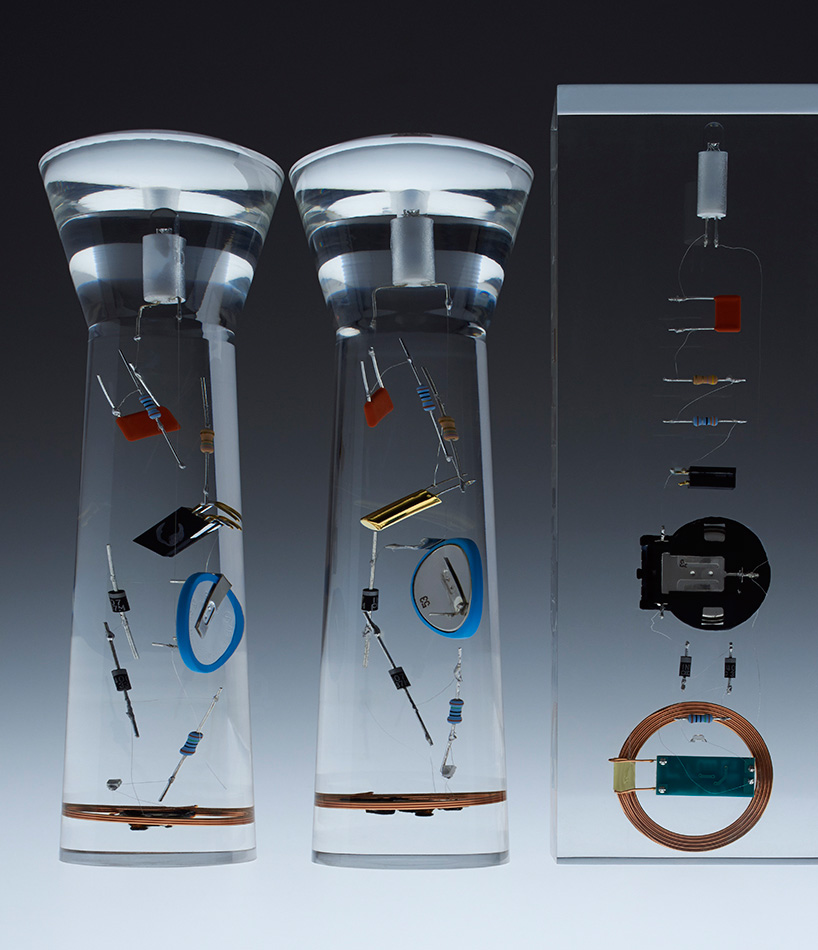
‘composition’ | read more on designboom here
image by masayuki hayashi
DB: what projects are you currently working on that you are particularly excited about?
SY: I’m conducting an independent research project that considers the connection between human-generated artificial objects and nature. there is essentially no boundary between nature and man-made objects, and humans, animals, and plants. I want to visualize this as a design work that says everything is related.
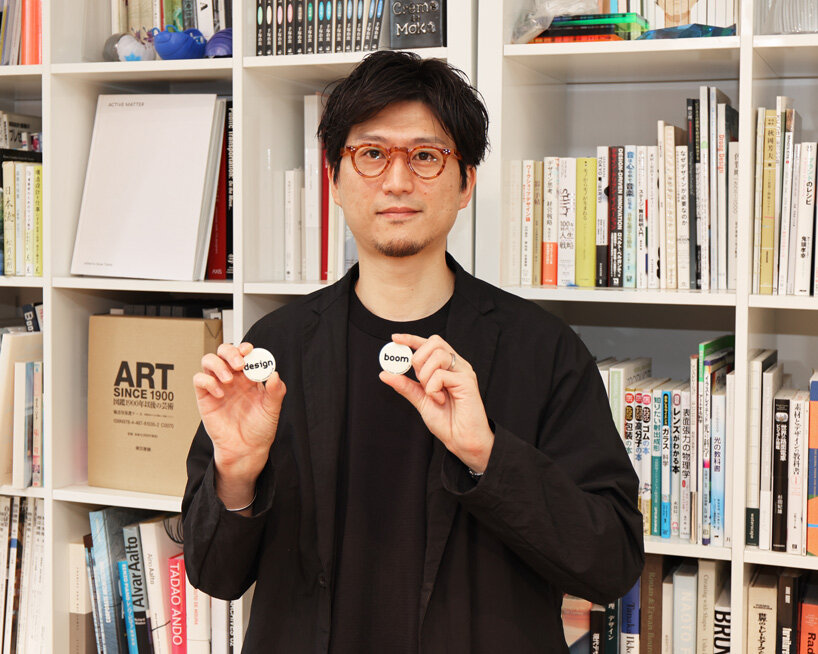
satoshi yoshiizumi, principal of takt project | image © designboom
takt project (17)
PRODUCT LIBRARY
a diverse digital database that acts as a valuable guide in gaining insight and information about a product directly from the manufacturer, and serves as a rich reference point in developing a project or scheme.
